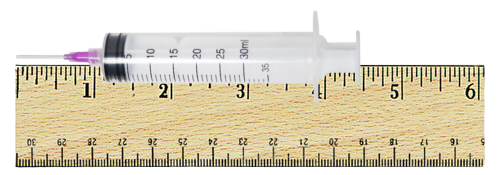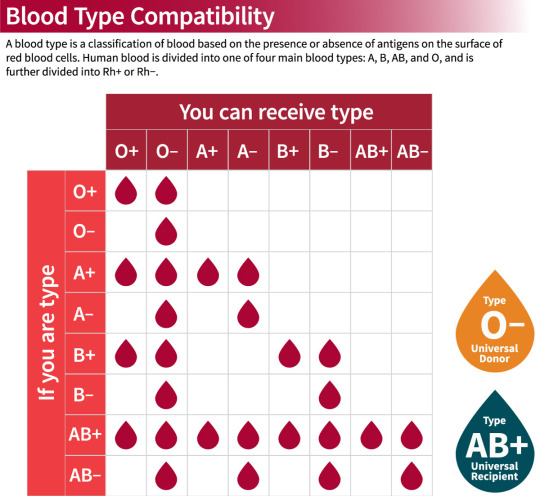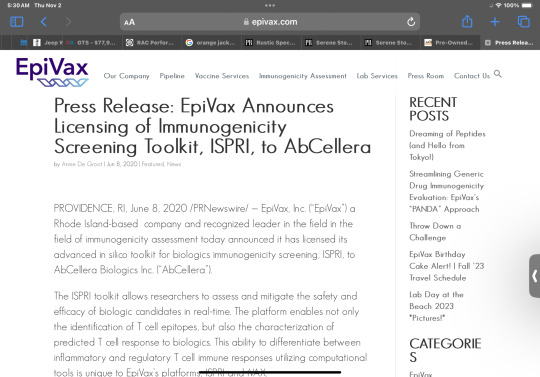#antibodies
Text
The researchers activated specific immune cells that induce broadly neutralizing antibodies in monkeys. The next phase of the work will now move to testing in humans.
“This study confirms that the antibodies are, at the structural and genetic levels, similar to the human antibody that we need as the foundation for a protective HIV vaccine,” says Kevin O. Saunders, associate professor in the departments of surgery, molecular genetics and microbiology, and integrative immunobiology at Duke University and first author of the study published in the journal Cell.
Continue Reading.
163 notes
·
View notes
Text


At the L.S. Dunes show in New Jersey, Frank performs Past Lives.
#Flashing#Flashing of Lights#L.S. Dunes#LS Dunes#LS Dunes NJ#2022#Antibodies#Grey Veins#Like Forever#Blender#Past Lives#It Takes Time#Bombsquad#Grifter#Permanent Rebellion#Sleep Cult#Frank Iero#LSDunes#LSDunesNJ#LS Dunes gif#Frnk#Iero#FrnkIero#My sweet meow meow
203 notes
·
View notes
Link
In immunology, affinity maturation is the process by which TFH cell-activated B cells produce antibodies with increased affinity for antigen during the course of an immune response. With repeated exposures to the same antigen, a host will produce antibodies of successively greater affinities. A secondary response can elicit antibodies with several fold greater affinity than in a primary response.
Interesting comment about this:
Spacing between infections matters also. As with many things in science, the devil is in the details. The longer we go between infections, our antibodies decline but the ability for the antibodies to recognize variants actually increases. It's called antibody maturation and it's one of the many very cool aspects of our immune system. But sometimes this process takes months, so it's very possible that simply by regular vaccination and avoiding *frequent* reinfections, you can avoid most if not all of the really nasty aspects of covid.
This obviously isn't 100% but when you look at rates of long covid and cardiovascular complications there is a noticeable decline esp. since vaccines became widely available. I would say things are getting better, it's just hard to notice when so many people have such bad lingering issues from covid. So no, being careful thus far has certainly NOT been in vain! If you avoided getting infected before vaccines, that was probably the biggest step. If you've avoided infection for 3 years, that's another important step as your immune system has grown and become wiser and more able to effectively fight the virus. And if you are still being careful and get infected, you are giving your body MORE chance to recover and build an even better response for the next time you see the virus.
19 notes
·
View notes
Text

Biology is great
#immune system#biology#comics#whiteboard#whiteboard art#studying#nerd#biology nerd#pathogens#antibodies
3 notes
·
View notes
Text

Picking the Brain
Various cell types in brain tumour biopsies are marked when applying radioactive antibodies for detection by positron emission tomography. This study of glioblastoma uses cell sorting and 3D histology – technique to highlight the tissue make-up – to distinguish cells of the tumour and its environment towards targeted monitoring of specific cell populations
Read the latest published research paper here
This is International Brain Tumour Awareness Week – 29.10–5.11 2023
Image from work by Laura M. Bartos and colleagues
Department of Nuclear Medicine, University Hospital of Munich, LMU Munich, Munich, Germany
Image originally published with a Creative Commons Attribution 4.0 International (CC BY 4.0)
Published in Science Advances, October 2023
You can also follow BPoD on Instagram, Twitter and Facebook
#science#biomedicine#neuroscience#neurobiology#biology#glioblastoma#gbm#brain cancer#brain tumour#cancer#oncology#pet scan#histology#antibodies#radiolabelling#radioisotopes#international brain tumour awareness week
6 notes
·
View notes
Text
Today’s antivenoms allow medical professionals to treat bites from certain snakes. If the hospital has only venom from a snake species different from what bit you then the medicine won't work.
Synthetic development of a broadly neutralizing antibody against snake venom long-chain α-neurotoxins
2 notes
·
View notes
Text


It’s April!:D
#biology#igcse#science#study notes#study tips#animals#studyblr#white blood cell#pathogens#antibodies#food poisoning#infectious diseases
6 notes
·
View notes
Text
Not so fun medical fact
It only takes about 30cc (30ml, 1 fl oz, 1/8 cup) of incompatible blood to kill you or leave you wil lasting injury at the least. Here's an image for scale:

The only caveat is that people with type AB+ are immune and type O- won't affect anyone. There's a biological reason for all of this that has to do with antibodies and antigens, that is too long to explain in this post, so here's a chart of the compatibility of blood types courtesy of The Stanford Blood Center:

Stay safe, and don't share blood.
6 notes
·
View notes
Text

The Antibody Odyssey
Have you ever wondered about the tiny superheroes zipping around your body, keeping you safe from invaders? No capes, no tights, but these incredible warriors are essential for our health: antibodies! These Y-shaped proteins play a crucial role in identifying and neutralizing these invaders, safeguarding our health.
Produced by specialized white blood cells called B lymphocytes (B cells), antibodies are highly specific molecules, each designed to recognize a unique signature on a foreign substance, known as an antigen. This specificity, akin to a lock-and-key mechanism, ensures that antibodies only target the invading pathogens and not our own healthy tissues.
The earliest glimpse of antibodies came in 1890 when Emil von Behring and Shibasaburo Kitasato made a groundbreaking discovery. They observed that serum from animals immunized against diphtheria could protect other animals from the disease. This landmark finding laid the foundation for the concept of "antibodies" and paved the way for further exploration.
In the early 20th century, Paul Ehrlich, renowned as the "father of immunology," proposed the "side-chain theory." This theory postulated the existence of specific receptors on cells that could bind to specific antigens (foreign molecules). This concept laid the groundwork for understanding the remarkable specificity of antibody-antigen interactions.
The 1960s witnessed a significant breakthrough with the work of Rodney Porter and Gerald Edelman. They elucidated the primary and secondary structure of antibodies, revealing their Y-shaped structure and intricate details of their amino acid sequences. This paved the way for a deeper understanding of their function and diversity.
The process of antibody creation begins when a B cell encounters an antigen. This triggers the B cell to activate and divide rapidly, forming a clone of identical cells. These clones, called plasma cells, become antibody factories, churning out millions of antibodies specific to the encountered antigen. These antibodies then circulate throughout the bloodstream and lymphatic system, patrolling for their matching antigens.
Recognizing and Eliminating Threats: The Multifaceted Arsenal of Antibodies
Once an antibody encounters its specific antigen, it binds to it with remarkable precision. This binding initiates a multi-pronged attack on the pathogen:Neutralization: By binding to critical structures on the antigen, such as the viral envelope or bacterial toxins, antibodies can render them ineffective, preventing them from infecting cells or causing harm. Opsonization: Antibodies act as flags, coating the antigen with a special tag that attracts other immune cells, such as phagocytes (white blood cells that engulf and destroy foreign particles). This process, called opsonization, marks the antigen for destruction. Activation of the complement system: Antibodies can trigger a cascade of protein reactions called the complement system, which further aids in the destruction of the pathogen.
But, did you know that there's not just one type of antibody? These versatile molecules come in various forms, each with its unique structure and function. The type of antibody produced also plays a crucial role in the immune response. There are five main classes of antibodies (IgG, IgA, IgM, IgD, and IgE), each with distinct properties and functions:
Immunoglobulin G (IgG): The Mighty Defender -
This is the most abundant antibody type, constituting around 70-80% of all antibodies in the bloodstream. IgG has four subclasses (IgG1-4) with subtle differences in function and lifespan. IgG is like a versatile soldier, capable of:
Neutralizing toxins and viruses: By binding to pathogens, IgG prevents them from infecting cells.
Triggering phagocytosis: It flags pathogens for specialized immune cells called phagocytes, which engulf and destroy them.
Passing immunity to newborns: IgG antibodies can cross the placenta, offering newborns temporary protection against infections until their own immune system develops.
Immunoglobulin M (IgM): The First Responder -
IgM is the first antibody produced by B cells in response to an infection. While less effective at neutralizing pathogens individually, it compensates through its:
Pentameric structure: Five Y-shaped units join together, increasing the "avidity" or overall binding strength to pathogens.
Complement activation: IgM can activate the complement system, a cascade of proteins that attracts immune cells and promotes pathogen destruction.
Immunoglobulin A (IgA): The Sentinel at the Gates -
This antibody is primarily found in mucosal secretions like tears, saliva, and breast milk. IgA acts as the first line of defense against infections at these entry points by:
Preventing pathogen attachment: It binds to pathogens, hindering their ability to adhere to and colonize mucosal surfaces.
Neutralization and exclusion: IgA neutralizes pathogens and facilitates their removal through mucus flow.
Immunoglobulin D (IgD): The Enigmatic Player -
IgD remains the least understood antibody type, making up only a tiny fraction (around 0.02%) of the total. While its exact function is still being unraveled, it's believed to be involved in:
B cell activation: IgD might play a role in stimulating B cells to mature and produce other antibodies.
Regulation of immune response: It's thought to be involved in fine-tuning the immune response by preventing B cells from overreacting.
Immunoglobulin E (IgE): The Double-Edged Sword -
IgE is responsible for triggering allergic reactions. It binds to allergens (substances perceived as threats) on mast cells, which then release histamine and other chemicals. This leads to the characteristic symptoms of allergies like runny nose, itchy eyes, and wheezing. However, IgE also plays a role in expelling parasites, It can trigger the release of substances that help expel parasitic worms from the body.
The Building Blocks: Chains and Domains
An antibody is comprised of four polypeptide chains: two identical heavy chains and two identical light chains. Each chain folds into distinct regions called domains, which are responsible for specific functions.
Variable (V) domains: Located at the N-terminus (amino-terminal end) of both heavy and light chains, these domains boast highly diverse sequences. This variability allows the antibody to recognize a vast array of unique structures on antigens, the foreign molecules it targets.
Constant (C) domains: The C-terminus (carboxy-terminal end) of the heavy chains contains these domains. They determine the antibody's class (isotype), which influences its ability to interact with other components of the immune system and trigger specific effector functions.
The Architecture: Y-Shaped Majesty : The four chains assemble in a specific manner, forming the characteristic Y-shaped structure. The arms of the "Y" are formed by the Fab (fragment antigen-binding) fragments, each consisting of one light chain and one heavy chain linked together. These Fab fragments house the antigen-binding site, the crucial pocket where the antibody specifically recognizes and binds to its target antigen. The base of the "Y" is the Fc (fragment crystallizable) fragment, solely composed of the C domains of the heavy chains. This region interacts with immune cells and molecules, dictating the antibody's fate and activating various immune responses.
A Hinge for Flexibility and Diversity : Connecting the Fab and Fc fragments is a flexible hinge region. This hinge allows the Fab arms to have some degree of movement, enabling them to bind to antigens with different shapes and sizes. This flexibility also contributes to the remarkable diversity of antibody specificities, allowing the immune system to recognize and combat a wide range of pathogens.
When we encounter an antigen for the first time, our B-cells take a snapshot of its "fingerprint" and create a specific antibody to fight it. These "memory B-cells" then stick around, so if the same antigen tries to attack again, our bodies can respond quickly with a trained army of antibodies, preventing us from getting sick again. This is the genius behind vaccinations! Vaccines introduce weakened or inactive antigens, training our B-cells to create memory for specific villains, so we're prepared if they ever try to invade for real.
The knowledge gained from antibody research has revolutionized healthcare. Here are some notable examples:
Vaccines: By exposing the immune system to weakened or inactive forms of pathogens, vaccines stimulate the production of specific antibodies, providing long-term protection against diseases.
Diagnostic Tools: Antibody-based tests, like ELISA (Enzyme-Linked Immunosorbent Assay), are widely used to detect and diagnose various diseases, including viral infections and autoimmune disorders.
Therapeutic Antibodies: Monoclonal antibodies, produced in the lab to target specific antigens, have emerged as a powerful tool for treating various diseases, including cancer, autoimmune diseases, and infectious diseases.
Antibodies are a testament to the body's remarkable ability to defend itself. These meticulously designed proteins, constantly patrolling our systems, stand as a testament to the intricate and sophisticated nature of the immune system. By delving deeper into their diverse functions and potential applications, we gain a profound appreciation for the intricate dance of life and the ongoing battle against invading threats. As research continues to unveil the secrets of antibodies, we can anticipate even greater advancements in healthcare and disease prevention, all thanks to these extraordinary defenders within us.
#science sculpt#life science#molecular biology#science#biotechnology#artists on tumblr#immunology#scientific research#disease#antibody#antibodies#immunity#health and wellness#vaccinations#structure of antibody#immunoglobulin#illustrative art#illustration#biology#animal facts#zoology#human body
6 notes
·
View notes
Text

Past Lives by LS Dunes + my fave lyrics
#ls dunes#frank iero#anthony green#it takes time#grey veins#antibodies#permanent rebellion#past lives#not as cool as what i had in mind but still not too bad either#my doodles#mcr doodles
8 notes
·
View notes
Text
Safer relief for people suffering from severe asthma is a step closer with a large clinical trial finding a monocolonal antibody treatment called benralizumab can radically reduce the need for more dangerous high-dose steroid treatments.
Asthma impacts almost 300 million people worldwide, around 5 percent of whom have a severe version of this respiratory disease. They face a horrifying struggle to get enough air on a daily basis, with all the associated chest tightness, coughing, panic, and frequent hospital visits.
Continue Reading.
146 notes
·
View notes
Text
Finally, a possible vaccine to treat UTIs--one of the most common (and resistant) infections in the world
Urinary tract infections (UTIs) are now the most common cause of outpatient infections worldwide.
These painful infections can lead to life-threatening illnesses if left untreated, but doctors are usually limited to prescribing antibiotics for UTIs, which can negatively impact the immune system. In a breakthrough from Duke University, the researchers say they have developed a vaccine that…

View On WordPress
#antibiotics#antibodies#bacteria#healthinnovations#immune#immunology#microbiota#tract#upec#urinary#uti
22 notes
·
View notes
Text
“Finding” antibodies in a human (after synthetic exosome injection) vs designing antibodies in a lab


:


*george Webb…. Not sure what to think.
#abcellera#peter thiel#robert malone#mrna#exosomes#antibodies#carl Hansen#everything is fucking managed#epivax#JC on a bike#Paul cottrell
3 notes
·
View notes
Link
#covid boosters#Americans#public health#Evie magazine#mRNA#covid vaccines#Pfizer#University of Michigan#Columbia University#Moderna#antibodies
16 notes
·
View notes
Photo

Shrinking Kidneys
A sudden assault on your kidneys can be crippling and unfortunately, can also lead to chronic kidney disease if your kidneys don't fully repair. Researchers investigate why using mice subjected to two types of acute kidney injury: one that leads to tissue wasting and one that leads to repair. Fluorescence microscopy of proteins in kidney sections, alongside RNA analysis, revealed that two weeks later, kidneys undergoing wasting had more macrophages compared with kidneys undergoing repair. And these kidneys also underwent a second wave of damage caused by a build-up of immune cells that promote inflammation. Injecting antibodies to deplete these immune cells reduced tissue wasting. Without antibody injections, a month later, fluorescence microscopy of kidney sections revealed smaller kidneys following injury that led to tissue wasting (right), compared with kidneys that underwent repair (left). The persistence of macrophages after injury, therefore, promotes a pro-inflammatory environment that leads to long-term kidney damage.
Written by Lux Fatimathas
Image adapted from work by Leyuan Xu and colleagues
Department of Internal Medicine/Section of Nephrology, Yale University School of Medicine, New Haven, CT, USA
Image originally published with a Creative Commons Attribution 4.0 International (CC BY 4.0)
Published in Nature Communications, August 2022
You can also follow BPoD on Instagram, Twitter and Facebook
#science#biomedicine#kidney#kidney disease#injury#tissue repair#inflammation#antibodies#immune system#immunofluorescence
20 notes
·
View notes
Text
Collaboration between Ed Sheeran and Ukrainian band Antibodies"Антитіла"
#ukraine#war in ukraine#ed sheeran#antibodies#антитіла#ЗСУ#song#ukrainian song#collaboration#stand with Ukraine#ukrainian music
52 notes
·
View notes